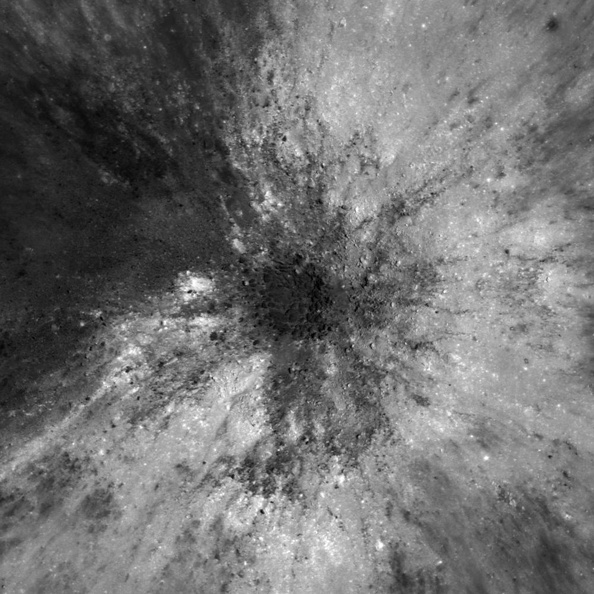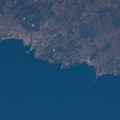
WIKIARCHIVES.SPACE
The Human Spaceflight Archive

This image shows the interior of a fresh impact crater (approximately 300 meters (328 yards) in diameter) in the Mare Smythii Constellation Region of Interest. In the high-sun image above, it is hard to recognise topographic features because there are no shadows. The wider view in Figure 1, paired with a lower-sun image of the same crater on the right, gives a sharper view of small scale features such as boulders. Portion of image M126371530LE, scene width is 530 meters (580 yards).
Information
- Taken in
- Author
- NASA/GSFC/Arizona State University
- Description
-
This image shows the interior of a fresh impact crater (approximately 300 meters (328 yards) in diameter) in the Mare Smythii Constellation Region of Interest. In the high-sun image above, it is hard to recognise topographic features because there are no shadows. The wider view in Figure 1, paired with a lower-sun image of the same crater on the right, gives a sharper view of small scale features such as boulders. Portion of image M126371530LE, scene width is 530 meters (580 yards).
NASA's Goddard Space Flight Center built and manages the mission for the Exploration Systems Mission Directorate at NASA Headquarters in Washington. The Lunar Reconnaissance Orbiter Camera was designed to acquire data for landing site certification and to conduct polar illumination studies and global mapping. Operated by Arizona State University, LROC consists of a pair of narrow-angle cameras (NAC) and a single wide-angle camera (WAC). The mission is expected to return over 70 terabytes of image data.
- Created on
- Monday 24 May 2010
- Albums
- US SPACE PROGRAM / PROBES / MOON / LRO/LCROSS / Mission Photos (Edited)
- Source link
- https://photojournal.jpl.nasa.gov
- Visits
- 13
- Rating score
- no rate
- Rate this photo
- License
- Public Domain
- Modified by WikiArchives
- No (original)
- Downloads
- 0
Powered by Piwigo









































































































































































































































































































































































































































































































































